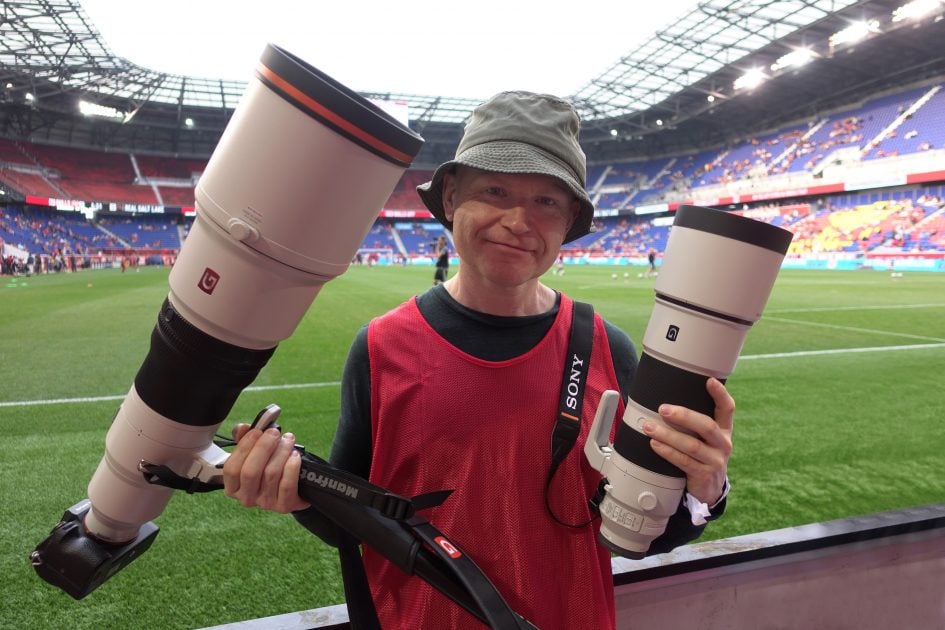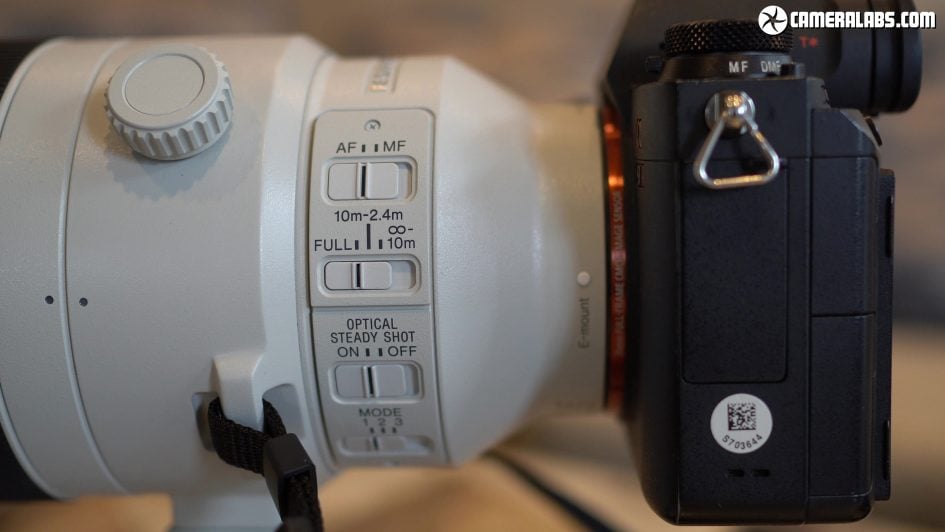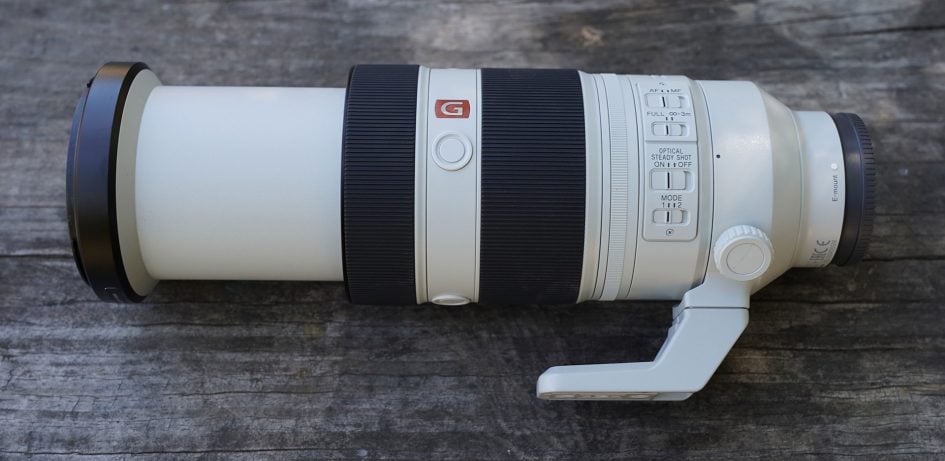Sony FE 200-600mm f5.6-6.3 G OSS review so far
-
-
Written by Gordon Laing
Intro
The Sony FE 200-600mm f5.6-6.3 G OSS is a super-telephoto zoom for Alpha mirrorless cameras aimed at sports, aviation and wildlife photography without breaking the bank. Announced in June 2019 alongside the FE 600mm f4 super-telephoto prime lens, they bring the total of native e-mount mirrorless lenses to 51. The aperture combined with the decision to not make it a member of the G Master series allowed Sony to keep costs down, and even undercut their FE 100-400mm while sporting a longer reach. I had a chance to try out a final production sample over a couple of days at a press event, shooting football, birds and jetskis. I’ve put together a video of the highlights and my first impressions below, followed by some excerpts for those who prefer to read, as well as a bunch of sample images!

I had a chance to try out the FE 200-600mm as well as the high-end FE 600mm f4 over a couple of days at an official press event, shooting football, birds and jetskis with the Alpha A9 body.

Above: Let’s start with the range to see what 200-600mm can give you in practice. Here on an A9 body at 200mm on the left and 600mm on the right.

Above: The FE 200-600mm is an understandably substantial lens, with a weatherproofed barrel measuring 112mm in maximum diameter and 318mm in length.

Above: In terms of controls there’s four switches for auto and manual focus, the autofocus range with three positions, one to enable the optical stabilisation and another to set the OSS mode.

Above: Loosen a locking dial and the lens barrel can rotate within a collar for easy switching between landscape and portrait orientations. Midway along the barrel is the smooth manual focusing ring, followed by a set of custom buttons which are typically used to temporarily lock the focus, and finally at the end, the zoom ring with a short throw of about 70 degrees – note the zooming is internal, so the barrel doesn’t extend.

Above: The optical construction employs 24 elements in 17 groups with optical stabilisation, a closest focusing distance of 2.4m, 11 aperture blades and DDSSM focusing. The variable focal ratio of f5.6-6.3 may sound uninspiring, but is par for the course at this range and price. Some rival 150-600mm lenses may start a fraction brighter at f5, but quickly begin to close as soon as you start zooming beyond 150mm, and they share the same f6.3 aperture at 600mm. Meanwhile Nikon’s 200-500mm f5.6 may have a constant aperture but doesn’t zoom as far at the long-end. If you want a brighter super-zoom you’ll need to pay a lot more – for example Canon’s EF 200-400mm f4 costs over $10000.

Above: Compare the size of the FE 200-600mm against the FE 100-400mm which at 94x205mm is comfortably smaller. Weighing 1395g, it’s also considerably lighter than the 200-600mm which weighs-in at 2115g when both are measured without their tripod feet.

Above: But compare the Sony 200-600mm to the Sigma 150-600mm Sport which measures 121x290mm and weighs 2860g with its non-removable foot and the Sony feels much lighter. Tamron’s 150-600mm may weigh much closer to the Sony at 1951g, but the FE 200-600mm has one major physical advantage over all of them, including the FE 100-400, and that’s internal zooming. Each of these other lenses, including the Nikon, extends its barrel as you increase the focal length, in the case of the Sigma Sport by an additional 90mm, making it longer overall than the Sony when zoomed-in. But more importantly the act of extending the barrel is harder work, requiring a stronger twist of the ring and also making the barrel susceptible to creep where it can gradually fall back again when pointed up or down.

Above: The combination of internal zooming coupled with a short twist of around 70 degrees between 200 and 600mm allows you to quickly and easily adjust the focal length while shooting. The zoom action feels very smooth too, and I found I could effectively go through the whole range with just a light twist between my thumb and finger. This sounds like a minor observation but it really transformed the use of the lens in practice, whether I was shooting athletes running back and forth or birds in flight.
Sony FE 200-600mm f5.6-6.3 G OSS verdict so far
the FE 200-600mm is a very compelling option for Sony owners who want a long reach without breaking the bank, their back or compromising on performance. Sigma and especially Tamron may have cheaper 150-600mm options available, but they won’t focus anywhere near as well when adapted, making them a lot less useful for the sports and wildlife you’ll invariably want to capture with a lens like this. The decision for an internal zoom with a short angular throw also transforms the ease and speed with which you can adjust the focal length. Indeed the range, coupled with the internal zooming makes the FE 200-600mm more attractive to me personally than the 100-400mm, even though that model is smaller, lighter and sports G Master specs with crisper results. I know when I’m shooting sports, aircraft and wildlife, especially birds, that the difference between 400 and 600mm is dramatic, and I’m pleased to say the new Sony also continues to focus effectively at f13 when using a 2x tele-converter, at least mounted on the A9 body; I’ll retest on the A7 III for my final review and of course perform a full suite of optical tests and comparisons. So while these are only my first impressions, I’d say the FE 200-600mm looks like being a winner for Alpha mirrorless owners who desire a long reach at an attainable price with minimal compromise.
Check prices on the Sony FE 200-600mm at Amazon, B&H or WEX! Alternatively get yourself a copy of my In Camera book or treat me to a coffee! Thanks!




